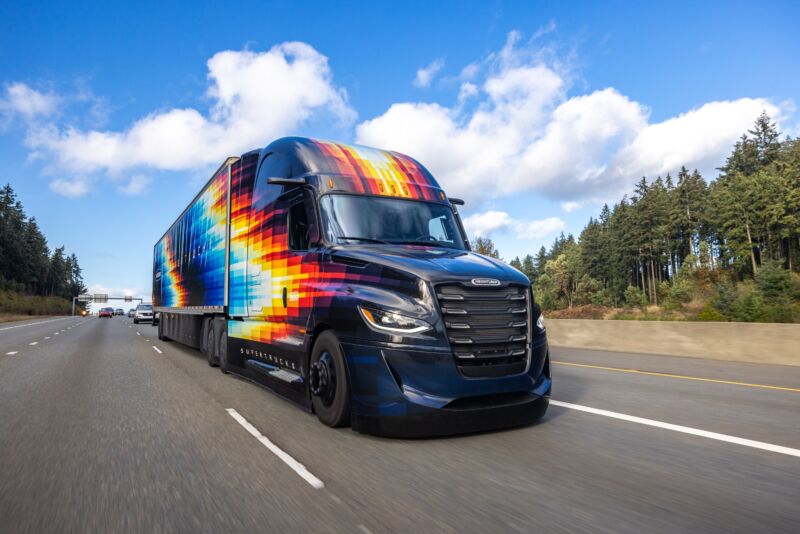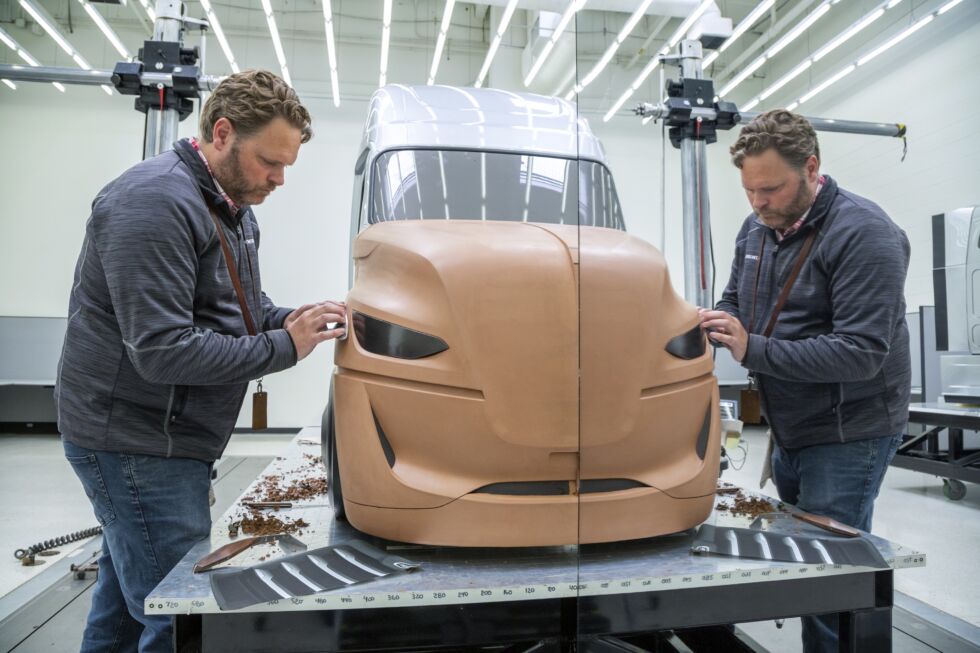
Daimler Trucks NA
In America, we move most of our stuff by road—trucks carried almost five times as much cargo as trains in 2017, according to the Bureau of Transportation Statistics. While it’s true that personal vehicles contribute the majority of our transport-related carbon emissions, a quarter still comes from bigger trucks and buses. When it comes to the biggest trucks on our roads—the Class 8 trucks that can pull up to 80,000 lbs (36.2 tonnes)—there’s a lot of room for improvement, which is where Super Truck II comes in. The Department of Energy funded a challenge to double the efficiency of 18-wheeler trucks, and the big machine you see in the photos here is Freightliner’s response.
In fact, the story dates back to 2010 and the first DoE Super Truck program, which eventually funded four truck makers (including Daimler Trucks, which owns Freightliner) to develop a heavy truck with 50 percent better efficiency than anything then in production.
Super Truck II got going in 2017, a couple of years after the end of the first program. Having already demonstrated that big efficiency savings were possible, Super Truck II has been about developing them into something production-ready.
“Class 8 long hauls typically try to do 700 miles a day of driving, so it’s mostly a highway kind of thing,” explained Darek Villeneuve, manager of advanced vehicle systems at Daimler Trucks North America. “So the routes are a little different than what your typical automotive kind of vehicle will go after, and it’s a difficult segment of the market to transition into alternative energies.”

Daimler Trucks NA
“We learned a lot in Super Truck 1, really diving in deep in terms of, ‘Here’s all the energy usages, and what could potentially be done,’ and the goal of Super Tuck 1 was less commercial; it was a little more research-focused. At least that was our basis,” Villeneuve continued.
The most important factor in terms of efficiency at highway speeds was aerodynamics. There’s certainly a lot of low-hanging fruit to be picked here—just drive an EV past a tractor-trailer and listen to all that wind roar for evidence of wasted energy.
Daimler Trucks North America and Freightliner are still in the business of selling trucks, and that’s why the cab you see here isn’t some wacky lay-flat design that could scare off a conservative customer base. Unlike the first go around, for Super Truck II, that meant bringing the design team in at the start.
“From a design standpoint, I know I’m trying to make an aerodynamic-looking truck,” said Jeff Cotner, chief designer at DTNA. “I want this thing to communicate the performance that we’re trying to achieve so that when [people] see it whether standing still or driving, it’s giving the product message that we’re hoping for.”
The design brief from management asked for something commercially viable. “You can make a spaceship, and some of our competitors did. But to turn that around and actually deliver it and have it do everything it needs to do for all of our customers is very difficult. It takes a lot longer than a Supertruck project to figure all that out,” Cotner told me.

